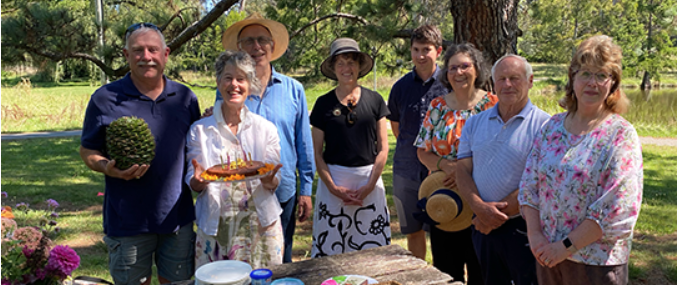‘Bee Inspired’ menu at Beechworth Honey
February 8, 2017Native Bee and Pollinator Workshop
August 1, 2017 We had small bees working diligently to pollinate the Pink Lady and Granny Smith apple trees at the ACT Beekeepers Field Day yesterday. It was wonderful to watch how carefully the children brushed the pollen onto each of the flowers and then buzzed over to the other tree to ‘cross pollinate’ it. Their wonderful help was rewarded with a delicious new season organically grown apple.
We had small bees working diligently to pollinate the Pink Lady and Granny Smith apple trees at the ACT Beekeepers Field Day yesterday. It was wonderful to watch how carefully the children brushed the pollen onto each of the flowers and then buzzed over to the other tree to ‘cross pollinate’ it. Their wonderful help was rewarded with a delicious new season organically grown apple.


I was searching for more information about apple tree pollination and came across a fascinating report about Fruit Pollination and Technology in China and the effectiveness of different species of bees (8 different species of Honeybees, bumblebees and Asian bees) for pollination of apple and pear trees in a range of localities. In SW China, the cultivation of apple and pear trees is growing each year, however due to environmental degradation and overuse of pesticides the number of wild pollinators has seriously declined and there are places where hand pollination has to be done which adds greatly to the costs. Not only is artificial pollination (people pollenating) more expensive, it is not nearly as effective as using particular species of honeybees. “Using bee pollination for apple and pear, Zhao Zhonghua et al. found that fruit yield was more than 20 higher than artificial pollination and the average production of each acre was 224.4 kg, 335.3 kg with the increase rate of 8.7 and 11.3 [23]”3.2
All in all, it certainly seems that bees know best how to pollinate and it’s up to all of us to provide environments where they can thrive. Go to ACT for Bees Gardening for Bees resources and find out more about the best plants for your region and how to provide a year round bee banquet for your locals.




